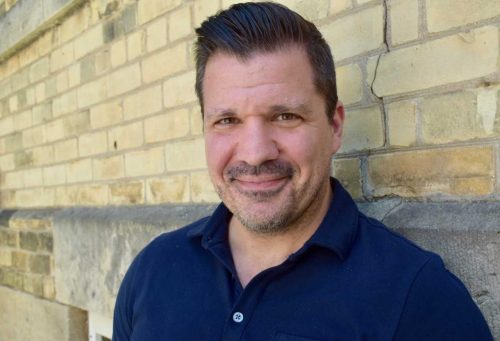
Positive messaging through social media could be a powerful tool to help people overcome non-suicidal self-injury (NSSI), according to a new U of G study.
“Self-injury, including cutting and burning, is a serious public health concern around the world,” said Prof. Stephen Lewis, psychology professor and lead author of the study.
The study got picked up by Yahoo.
While it affects people of all ages, self-injury is more prevalent among people from 14 to 24. Within that age range, up to one in five have engaged in self-injury.
Published recently in the journal Digital Health, the study explores the use of positive messaging to encourage recovery.
“We know that young people who struggle with self-injury often go online to obtain needed social support,” said Lewis, adding that the stigma surrounding self-injury contributes to a strong sense of isolation.
For those who engage in NSSI, the Internet can provide a less threatening and more anonymous information and support network, especially if individuals are not getting support elsewhere.
“They often just want to see other people’s stories and to understand that they’re not alone in their struggle,” he said. “They are looking for a sense of validation, acceptance and understanding.”
Along with Poojan Joshi, a former U of G psychology undergraduate student, and Yukari Seko of Toronto’s Bloorview Research Institute, who was a post-doctoral researcher at U of G during the study, Lewis measured how online comments about self-injury affected the attitudes about recovery in people who have engaged in self-injury.
The team embedded fictional peer comments in a screenshot of an NSSI-themed YouTube video, and assessed attitudes about NSSI recovery before and after positive and negative messaging.
While there is growing concern that accessing NSSI content online may hinder recovery, Lewis found that exposure to positive comments improved participants’ attitudes about recovery.

The team also found that exposure to pessimistic comments about recovery did not increase participants’ sense of hopelessness.
Lewis said this preliminary study opens the door to more research on how to use the Internet and social media to instill a sense of hope.
“NSSI is a complex concern, but many who self-injure experience very painful, intense and difficult emotions that are perceived as extremely difficult to tolerate and control,” Lewis said. “To this end, we see that the most common reason given for self-injury is to get relief from these adverse experiences, even if for a moment.”
Along with efforts to understand the behaviour and find ways to cope, rereading positive stories may help, he said.
“If we can somehow harness social media and online content in a way that instills hope, fosters recovery, and provides good-quality and reliable resources, then the possibilities are huge.”
Lewis has written and spoken publicly about his own self-injury, trauma and depression as a young adult.
“My own journey overcoming a lot of difficulties, including self-injury, led me to cultivate a passion to somehow address a phenomenon that was incredibly misunderstood, shrouded in stigma and misconception.”
Along with Nancy Heath, professor in the Department of Educational and Counselling Psychology at McGill University, Lewis is co-founding director of SiOS (Self-injury Outreach and Support). The non-profit outreach initiative helps facilitate recovery and counter misconceptions and stigma about self-injury.
Through its website, it shares stories of recovery, provides international outreach services, and information, guides and coping resources about self-injury.
Contact:
Prof Stephen Lewis
slewis03@uoguelph.ca